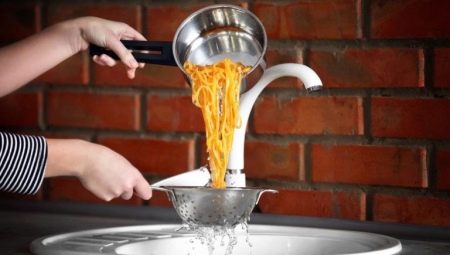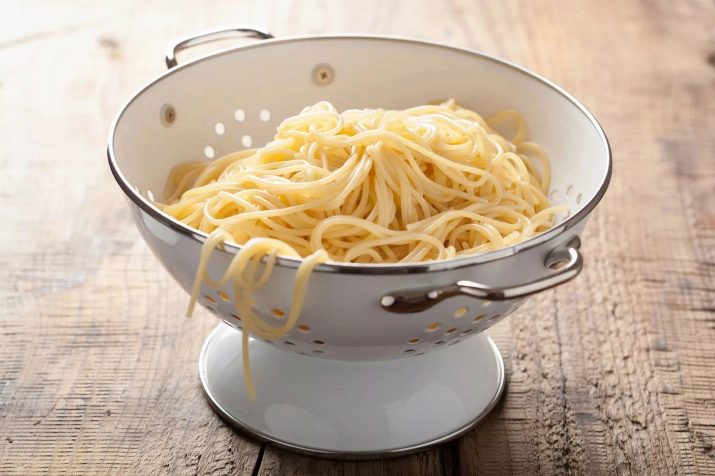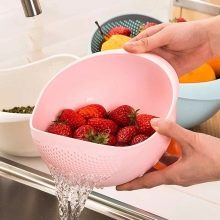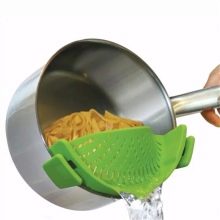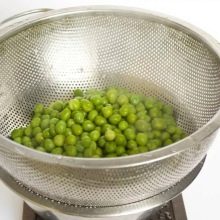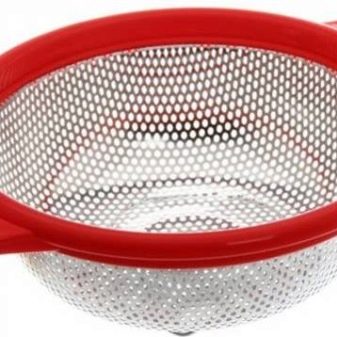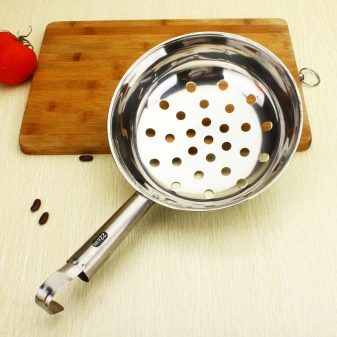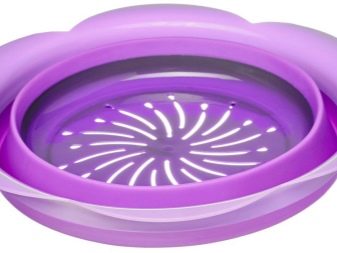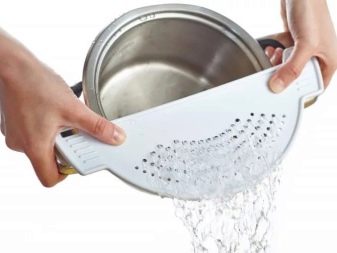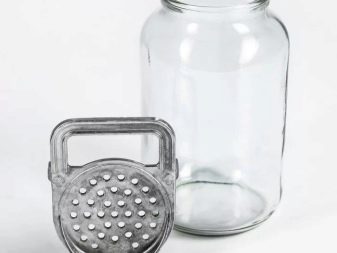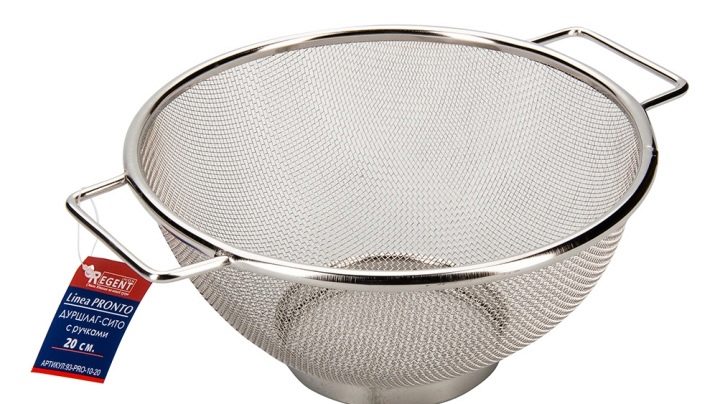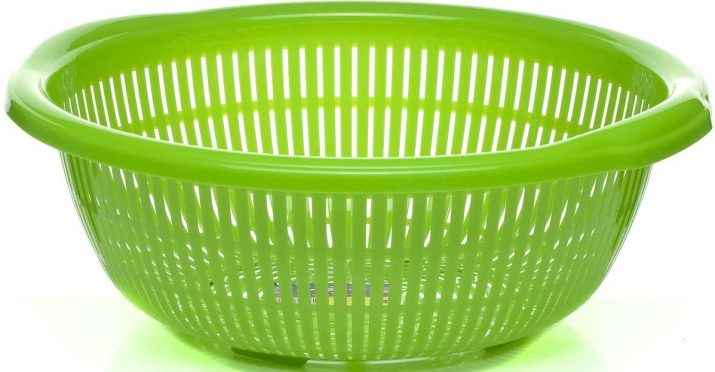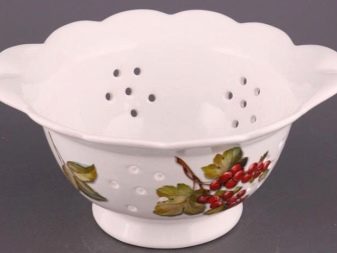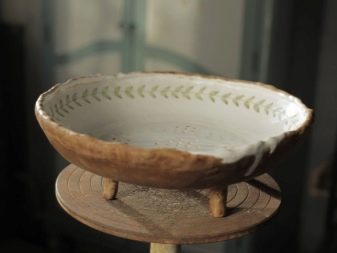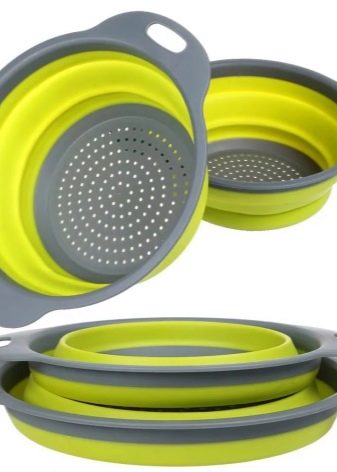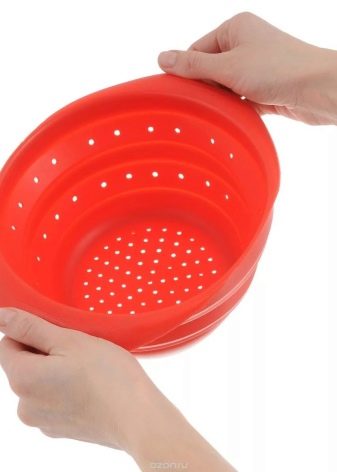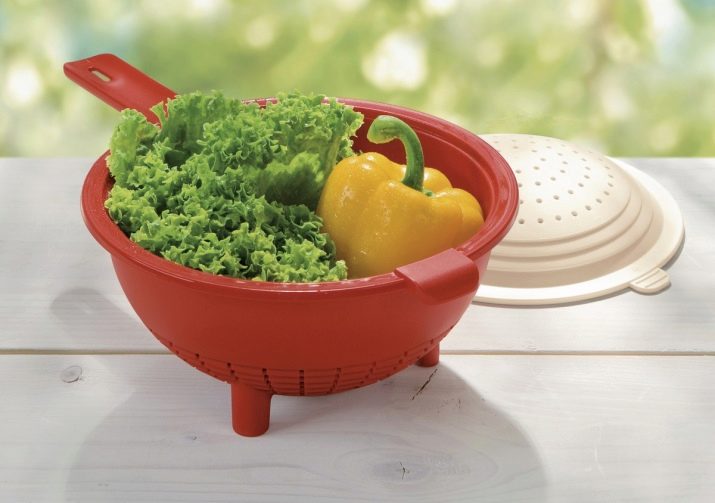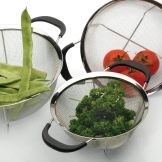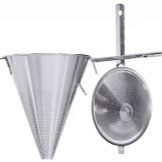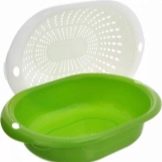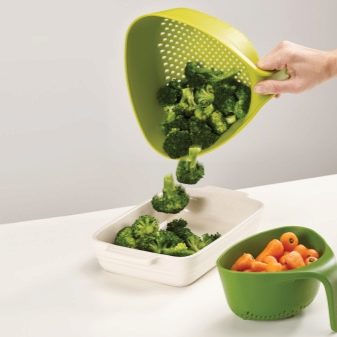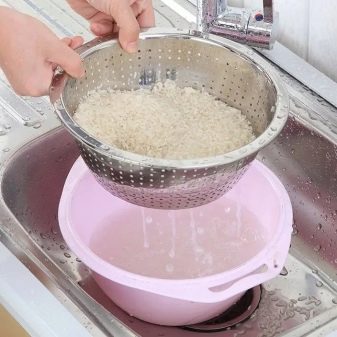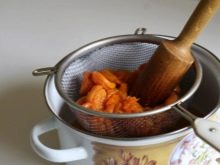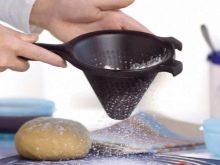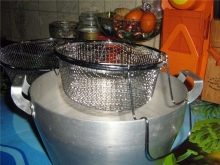In order to cook food quality, take as little time as possible, and also contribute to the comfort of the cook in the kitchen, there must be a lot of household appliances and utensils. In addition to pots, pans and other similar items, the dining room should be equipped with a colander.
What it is?
The colander is called an indispensable kitchen item, which has the form of a large pot with holes of different sizes. It is mainly used for filtering dishes. The main purpose of this utensil is to separate the product from the liquid. With it, the hostesses perform the following tasks:
- washed vegetables, fruits, berries;
- drain the pasta;
- Poured canned food, such as peas, corn.
The above works can be carried out without a colander, but with it you can do everything faster, better and safer. Washing the pasta without this utensil, you can burn your hands. The colander is considered to be the kitchen item that can reduce injuries in the dining room.
Kinds
The colander is considered invisible and at the same time an indispensable item in the dining room. Currently, every housewife can choose for themselves the best option for cooking pasta, rice, cereals. Models are divided by the size of the holes:
- with small holes excellent for washing berries, because they do not let even the smallest of them, also sieve flour, loose products, filter sauces with the help of mesh utensils;
- with large holes used for washing large-sized fruits, as well as for draining water from dumplings, ravioli, and more.
Popular varieties of colander can be called the following options.
- Folding. Such a colander has the form of a flower with perforated petals, which tend to open up spirally, while forming a cupped shape.
- With handlesthat are stacked.
- Flat. This type of colander has the form of a perforated crescent-shaped plate. It is removable, as it can be put on pots and cans for subsequent draining. With the help of such colander washed berries, greens. This model has a handle, and then it turns into a box.
- Suspended mesh model has the ability to fasten to the edges of the sink, it is characterized by the presence of rubberized legs, which contribute to the stability of the structure.
- Colander - the lid is put on cans or pans with compote. Such utensils contribute to the fact that only liquid is poured.
Materials
Like any other household item The colander can be made of various materials.
- Galvanized. This version of the colander is considered the cheapest and not particularly high quality. Such utensils in a short period of time rust, as well as the interaction with other substances releases toxic substances.
- Enamelled. The object that is made of this material is safer than galvanized. If they are carelessly used, then the colander is covered with chips, and this is dangerous for people.
- Plastic - the most suitable option for filtering curd, washing fruits and vegetables. The disadvantage of this utensil is that it is impossible to drain a hot liquid through it, since plastic tends to melt and release toxic substances.
- Ceramic Colander not often found on sale. Its advantage can be called safety, versatility in use, and a minus - fragility, inability to use boiled liquid for draining.
- Aluminumas well as stainless steel colander is considered the best option. Metal utensils are used for hot and cold water treatments. This type of kitchen assistant - the safest due to the fact that it does not corrode.
- Copper, iron. Such options are on sale infrequently.
- Silicone The colander is a decent option for kitchen utensils, it is practical and completely safe.
Sizes and shapes
Colanders can have various sizes and volumes. The standard model of this kitchen item has a volume of 1 and 1.5 liters, while having a diameter of 0.15 - 0.25 m. There are situations that such utensils are small or, conversely, large for procedures that the hostess carries out, therefore You can buy more than one bowl with a sieve.
Nowadays items that have a large and small capacity are very popular, and they are fixed on the legs. In this case, a double stewpot can be used disassembled, that is, each grid separately.
On sale you can find colanders of this form:
- round, they are considered a classic version, so the most common;
- rectangular, square are not as common as the previous ones, but are considered more convenient for pouring berries and pasta into a dish, such an assistant in the kitchen is characterized by stability and compactness;
- oval usually have legs that allow you to place a colander in the sink, not holding it;
- conical and conical.
Criterias of choice
When choosing a colander do not pay attention to its appearance, this criterion does not play an important role when using the object. This kitchen assistant is chosen for a specific functional purpose, so first of all it should be safe and convenient. Also, the hostess should pay attention to the fact that the handles of utensils should be made of a material resistant to heat, so as not to get burned when using it.
When buying a colander, you must first decide for what purposes it will be used., after that, pay attention to the size of the holes on the sieve. Knowing the volumes of dishes that are prepared daily, you need to buy utensils with the appropriate volume and size. This kitchen assistant should not be bulky and take up a lot of space.
One of the most important points to consider when buying is the choice of material, it should not quickly deteriorate and release toxic substances.
Operation Tips
How to use a colander knows every hostess. This kitchen item has found wide use in housewives:
- for washing products;
- to drain the liquid after boiling flour dishes;
- for sifting bulk products;
- for steaming food;
- for the preparation of mashed vegetables and fruits.
This multifunctional object, depending on the shape, fastening and the presence of legs, is installed in the sink and used as intended. This kitchen utensil must be cleaned after each use with the help of special tools. After washing the colander is well rinsed under running water.
A colander review from IKEA awaits you further.
